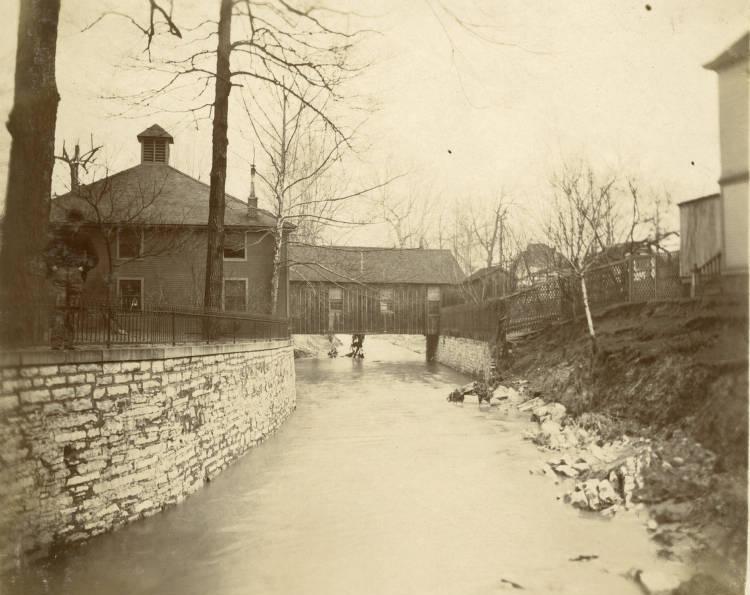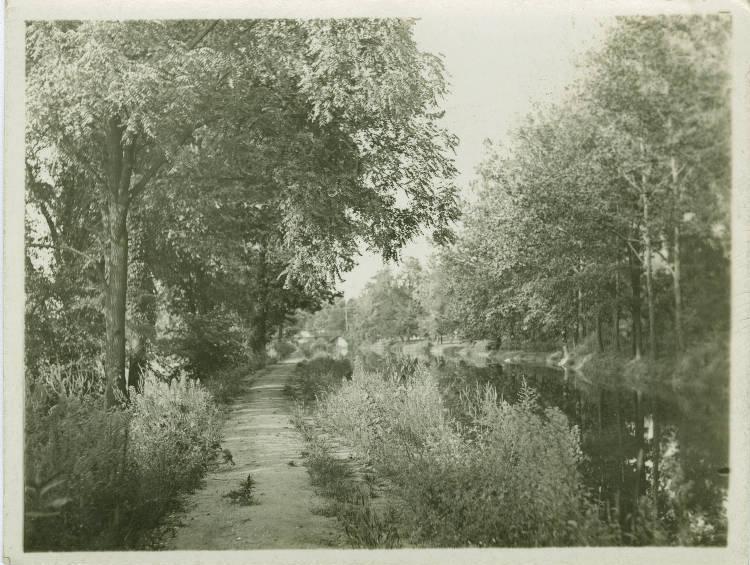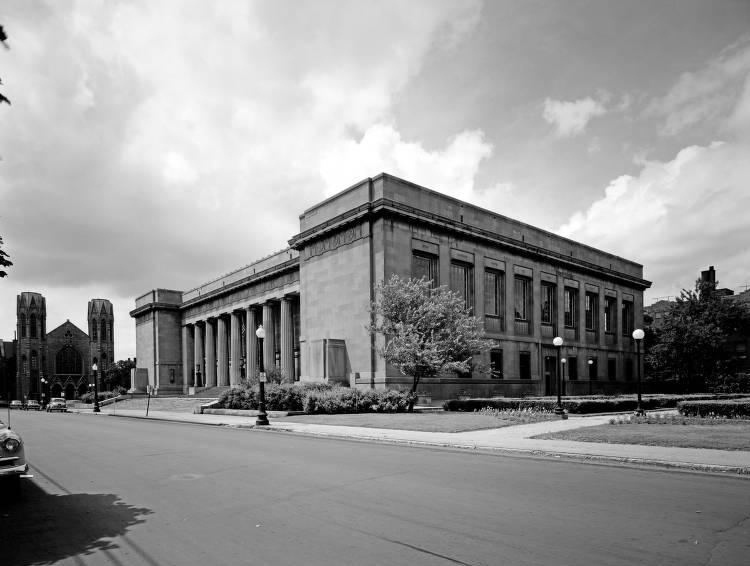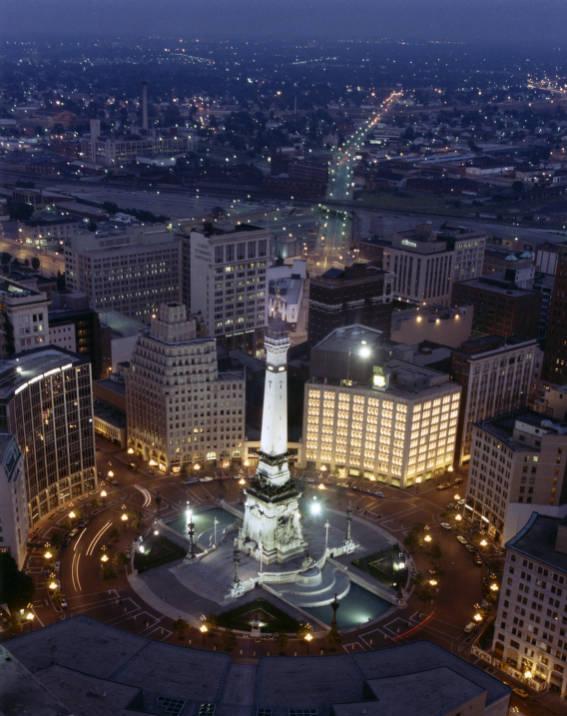Home of the City of Indianapolis, Marion County was named in honor of Revolutionary War General Francis Marion. It was organized in 1821 when the state decided to move its capital to a more central location. The first white families had come to the area only two years earlier, but the decision to move the state capital to the vicinity of attracted optimistic settlers to this swampy wilderness. The earliest residents spent much of their time hunting deer and bear, which were plentiful throughout the area. Hides and pelts were tanned and sold or traded, first at Indian posts and later at Indianapolis, and hundreds of pounds of meat were smoked and cured for winter. As more settlers came to the area, some residents began making bricks and selling them to prospective builders in Indianapolis.

Since the land was heavily forested and swampy in many areas, agriculture was slow to develop in the county. Ginseng grew abundantly, however, and although not valued in the United States the Chinese used it for medicinal purposes. In the late 1820s, opened a shop on Delaware Street near where he dried and prepared ginseng roots. Blake sent his product overland to Philadelphia, from which it was shipped to China. His business prospered for several years, and his shop provided an important market for many Marion County residents.
Transportation has been a central theme in the county’s history. Indianapolis’ early hopes of becoming a large inland market center were dashed when the White River proved unnavigable and work on the halted after the state’s program of internal improvements went bankrupt in the late 1830s. Marion County residents relied on the and the for shipping, and many made a living serving travelers as hotel and tavern keepers. However, the price of shipping goods overland was prohibitive (it cost more to ship freight from Madison, Indiana, to Indianapolis than it did from Boston to Madison), and early attempts at manufacturing in Marion County failed.

The advent of the railroad in Indiana was a turning point in the history of Indianapolis and Marion County. The completion of the to the state capital in 1847 made large-scale manufacturing economically viable. By 1852, Indianapolis had six different railroad lines connecting it to all the large midwestern markets.
The railroad lines were centralized for the common use of passengers of many different lines at the first established in the U.S. in 1852-1853. Easier and cheaper access to more cities made Indianapolis a more attractive market than Madison, and in the 1850s population growth in the capital city outpaced that in the Ohio River cities for the first time.

By the end of the decade, Indianapolis had replaced Madison as the state’s most populous city. Outside of Indianapolis, the railroads spurred agricultural development in what would become the most fertile and productive county in the state. Farmers were paying less to ship their crops and livestock and investing their profits in improving more farmland and developing more advanced methods of farming. Indianapolis’ many pork-packing plants catered to the county’s hog breeders and made hog raising one of the most profitable occupations in central Indiana.
The construction of the in the 1870s routed 13 different rail lines around the perimeter of the city and opened space downtown for the development of the famous Indianapolis , which provided yet another convenience for Marion County farmers.

The development of the interurban railway system in the early 20th century had a dramatic impact on Marion County as well. It offered all county residents easy access to Indianapolis and other cities in central Indiana. The introduction of freight service on the changed the nature of farming in those areas of Marion County nearest to Indianapolis. Express delivery into the city meant that large quantities of fresh dairy products could be shipped daily. Poultry farming increased to keep up with the demand for eggs, and dairy farms cropped up all around the periphery of the city.
The mode of transportation that has had the most impact on Marion County is the automobile. Throughout its history, the county had been rural and agricultural with an urban area at its center. Villages and suburbs developed around train stations and along interurban lines, but most of the acreage in the county was in farmland. In 1922 more than 80 percent of the over 260,000 acres of land in Marion County was farmland; as late as 1953 this figure was still over 72 percent. Marion County was the richest agricultural county in the state and had the largest 4-H program of any county in the nation.

Rapid suburbanization of the county in the 1960s and 1970s changed the landscape dramatically. Housing subdivisions, strip malls, and shopping centers sprang up throughout the county on what was once productive soil. But the interstate highway system has been the key factor in the transformation of Marion County. By 1968 only 106,000 acres in the county were classified as agricultural.
During the 1970s and 1980s development along I-65 in Pike Township claimed much of the farmland that remained in northwestern Marion County. Development in the area had likewise covered most of the productive soil in the northeastern portion of the county. In the early 1990s, fewer than 48,000 acres of farmland remained, almost all of it in Franklin Township in the southeastern corner. Urban planners and agricultural experts predict that there will be no farmland remaining in the county by the year 2050.
Politically, Indianapolis has been the focal point of Marion County since the first elections in 1822. In 1970 merged city and county government by bringing all unincorporated areas under the jurisdiction of the mayor of Indianapolis and the 29-member City-County Council. All county residents are eligible to vote for the mayor and council. The county is divided into nine and has four incorporated cities, 11 public school districts, and several incorporated towns.
Marion County leaders are in the midst of an ambitious plan known as Plan 2020. Beginning in 2013, Indianapolis/Marion County leaders gained the commitment of 30 partner organizations to implement a plan to stitch together existing planning documents into a broad vision to attract residents back to the urban core.
One hundred years ago more than half the population of the Indianapolis metro area lived within 5 miles of . By 2020 accounted for less than 8 percent of residents in the 11-county Indianapolis metropolitan area population. A marginal uptick in Center Township’s population has been dwarfed by that witnessed in and .
To attract residents Plan 2020 addresses issues such as transit, parks, economic development, housing, and workforce training. One piece of Plan 2020 is the Great Places initiative which seeks to create six new urban villages using , , and .

Is this your community?
Do you have photos or stories?
Contribute to this page by emailing us your suggestions.